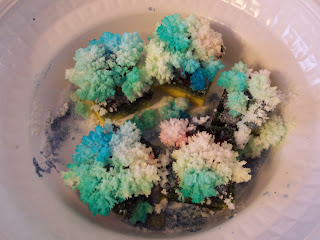How do you find out what kids think of scientists? Have them draw a picture!
This week I was working on a story about CSI and how it's changed public perception. For DAs, the so-called "CSI Effect" has been a problem: juries expect to see the full array of high-tech analyses before they'll convict a defendant (whether it's needed to prove their guilt or not).
A Rensselaer Polytechnic Institute scientist has discovered a fact about mosquitoes that may turn the treatment model for malaria upside down.Instead, they draw scientists who are more "realistic," researchers say. Something like the woman below, who plays a forensic scientist on CSI: Miami, as quoted in yesterday's Parade Magazine:"The mosquito is as much a victim as we are, but nobody thinks of the mosquito that way," said Robert Lindhardt, a biochemist and acting director of RPI's Center for Biotechnology and Interdisciplinary Studies.
Q Your item on Emily Procter made me wonder: Why do she and the other women on the CSI shows, such as Marg Helgenberger and Melina Kanakaredes, choose to show so much cleavage?
—E.G.J., Lothian, Md.
A “You don’t really think we dress ourselves, do you?” asks Procter. Costume decisions lie with the producers and wardrobe staff, who seem to follow the philosophy “the deeper the cleavage, the higher the ratings.”














































